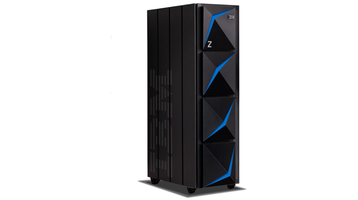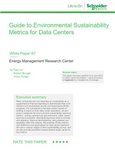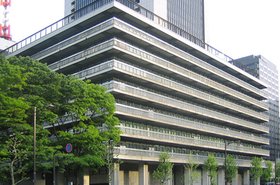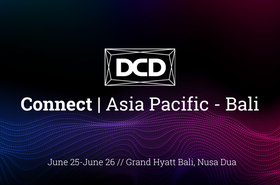When it comes to modernizing IT environments, people are learning that modernization can work best with a hybrid cloud approach, especially when mission-critical workloads are involved. More specifically, companies should carefully take into account the nature of the applications and workloads in question and the infrastructure best suited to run them securely and reliably.
Mainframes are designed to be the most dependable platform for high-volume transaction – and data-serving workloads that require security, precision and predictable response times – including payroll processing, core banking and insurance underwriting. With new solutions utilizing generative AI, the ability to modernize mainframe applications is easier. Meanwhile, advances in automation and support for AI, DevOps, APIs, modern programming languages and data integration have prepared mainframes to remain an enterprise workhorse for many years to come.
It’s not all or nothing
There are several reasons modernization isn’t an all-or-nothing endeavor, with either public cloud migration or a fully on-prem approach as the end states. First, migrating fully to public cloud usually moves or rewrites 100 percent of application code, often millions of lines. This can bring huge amounts of complexity, with migration timeframes stretching out five to 10 years. Second, most migration efforts also require a new data model coupled with a data migration plan, which can be a significant risk to the business. Third, the migrations change the ways applications integrate with the hosting server and often split up the transactional context across multiple platforms, which could add more risk and complexity to migration projects. Finally, when companies try to migrate workloads, they can often struggle to meet non-functional requirements such as performance, security and resiliency.
It’s important to understand business goals and the challenges involved in full migration from the mainframe to public cloud. For starters, companies undergoing such transformations typically need to run workloads in parallel for some time, which may get very expensive. In addition, based on my conversations with clients, the public cloud tends to have greater latency than businesses are accustomed to in their mainframe environments, pushing transaction response times beyond what their customers find acceptable.
As a result, the number of success stories migrating mission-critical applications to the cloud is negligible, compared to the number of demonstrable failures.
A case in point is a $62m fine levied against a major European bank in 2022, for operational risk management and governance failures following a poorly executed 2018 mainframe-to-cloud migration. The problems were illustrated in recent research from Futurum detailing the failure.
A complex undertaking, the bank’s migration project involved 85 subcontractors and took almost three years. Although the data itself migrated successfully, the UK’s Financial Conduct Authority (FCA) and Prudential Regulation Authority (PRA) issued the penalty in response to technical problems that prevented a large number of customers from accessing branch, telephone, online and mobile banking services for weeks. Despite multiple board-level reviews and third-party project audits, the project led to chaos for customers and the resignation of the bank’s CEO.
[Editor's note: This is the story of British bank TSB, which botched its mainframe migration in 2018, causing an outage that locked two million customers out from their bank accounts for weeks. The regulators issuing the $62m fine said that TSB had outsourced its migration unwisely, without ensuring that the contractor - owned by TSB's parent - was up to the job.
It is worth pointing out that after the failed migration, TSB had a more measured modernization deal in 2019, which is believed to have cost around $1 billion. Its new partner is IBM.]
The value of hybrid application modernization
To keep mission-critical applications up to date and running in the most appropriate environment, businesses should adopt a hybrid cloud approach to modernization that includes the latest mainframe technology and a fit-for-purpose workload placement strategy. When enterprises talk about migration projects, it may seem like there is a wholesale effort to shut down the mainframe, but in my conversations with clients, I’ve seen most move a very small percentage of their workload, with these same companies actually growing their mainframe capacity overall. In fact, a 2020 Deloitte study of 200+ mainframe decision-makers found 91 percent are prioritizing expanding their mainframe footprint in the next 12 months.
While not all applications make sense to run on the mainframe, it is without a doubt built to be the best platform for secured transaction processing and data serving workloads. That’s why so many businesses are adopting a mainframe application modernization approach, highlighted by Deloitte as one of the most important tech trends for 2023.
Generative AI enhances application modernization
While generative AI is most closely associated with natural language assistants, it also holds tremendous promise in the field of software development, where it can help make coding much faster, less repetitive, more consistent and augment developer skills. For complex initiatives like mainframe application modernization, generative AI stands to deliver tremendous value.
Indeed, new tools are emerging aimed specifically at this task. For example, using AI-generated recommendations for code writing, developers can now much more easily modernize common business-oriented language (COBOL) – the procedural, object-based language at the heart of mainframe data processing. Generative AI tools with COBOL- and Java-capable foundation models enable organizations to make quicker work of code development, improving developer productivity – an important consideration given the ongoing talent gap. It’s important to produce consistently well-architected, high-quality code with these tools, so modernization initiatives can proceed with less risk and shorter time to value.
Going forward, additional software development tools will continue to make the proposition of mainframe modernization – as opposed to wholesale migration off the platform – a prudent part of organizations’ overall digital transformation agenda. By taking advantage of the performance, resilience, security, agility, regulatory compliance, and other core strengths inherent in both the mainframe and hybrid cloud platforms, businesses can navigate the evolving technological landscape with a proven approach for many years to come.





